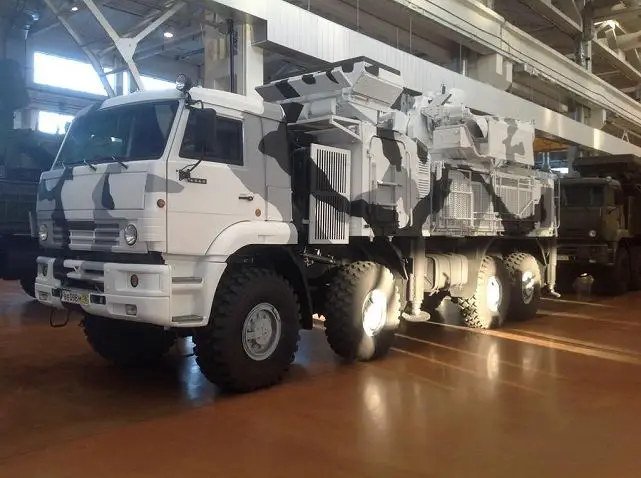| a | |||
Defence & Security News - Russia |
|||
| Friday, January 24, 2014 11:08 AM | |||
| Pantsir-S1 air defense system will be tested and deployed in the next few months to the Arctic region. | |||
During
the visit January 20, 2014, of the Russian President Vladimir Putin to
the factory of the Russian Defense Company KBP Instrument Design Bureau
of Tula, a new variant of the Pantsir-S1
air defense missile-gun system was presented with camouflage adapted to
be used to the Arctic region. |
|||
| |
|||
 The Russian-made Pantsir-S1 short-tange air defense system with winter camouflage at Tula factory, January 20, 2014. |
|||
According to the KBP's first deputy managing director, Nikolai Khokhlov, the Pantsir-S1 will be tested in the Arctic region. If the tests are successful, the Pantsir-S1 could be rapidly deployed in this part of the world. The
Pantsir-S1 (SA-22 Greyhound NATO code name) is an
air defense missile-gun system designed to protect vital small-size and
big military areas, industrial targets and land forces units and reinforced
the air defense units responsible for the protection of troops and military
installations against precision-guided air attack from low and extreme
low altitudes. Arctic territories, believed to hold vast untapped oil and gas reserves, have increasingly been at the center of disputes between the United States, Russia, Canada, Norway and Denmark as rising temperatures lead to a reduction in sea ice. Russia
has made claims on several Arctic shelf areas and is planning to defend
its bid at the United Nations. |
|||
Pantsir-S1 air defense system will be tested deployed in next few months to Arctic region 2401141
- Posted On















